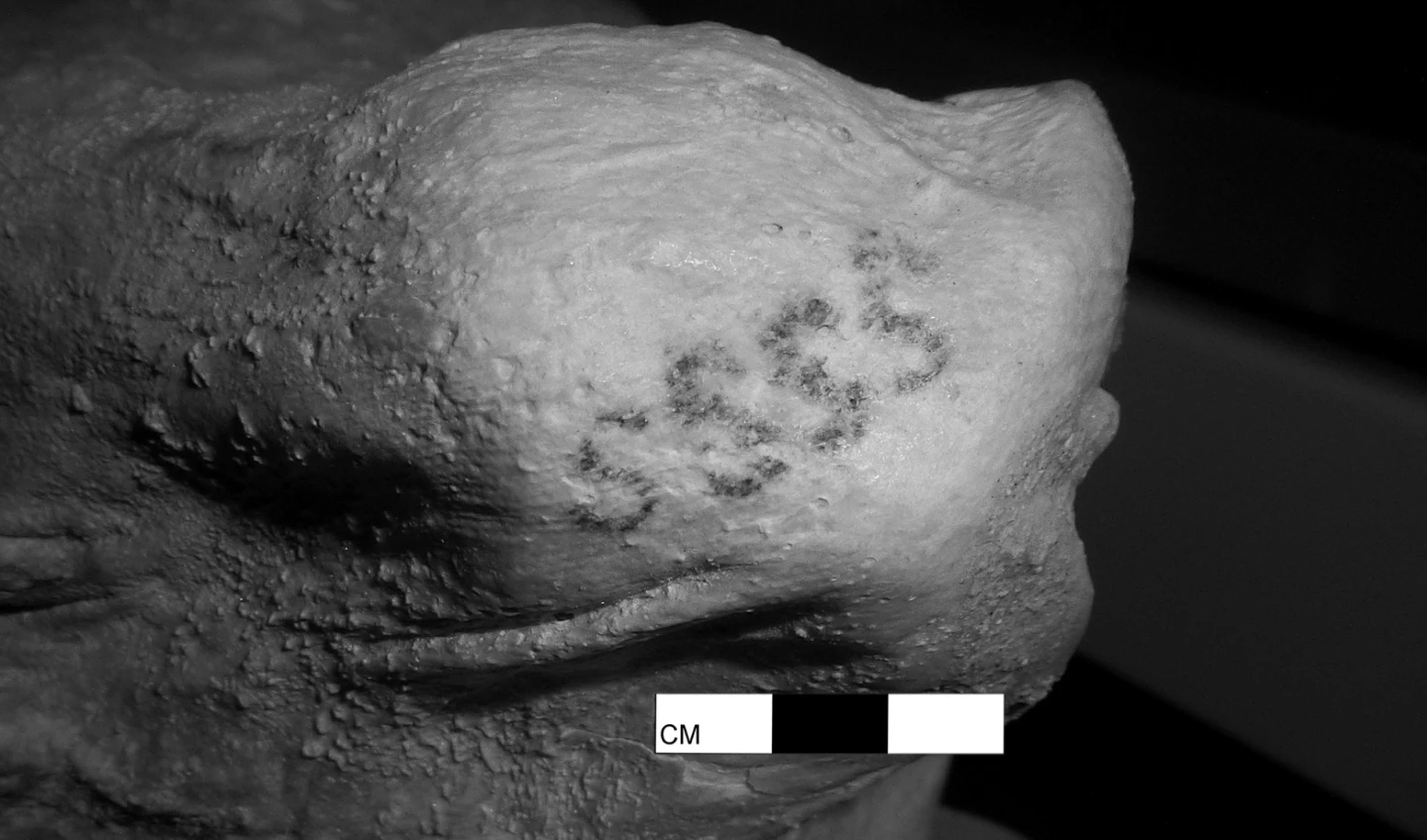Using infrared imaging technology a team at the British Museum has uncovered tattoos on two ancient Egyptian mummies, revealing the oldest ever discovered examples of figurative tattoos.
The two mummies date back to Egypt's Predynastic period between 3351 and 3017 BCE. Known as the Gebelein mummies, these well-preserved bodies have been on display at the British museum for over a century after being excavated at the end of the 19th century.
One of the mummies, a young man previously identified as having died from being stabbed in the back, displayed dark marks on his upper arm but it wasn't until recently that researchers examined the marks using infrared imaging. It was revealed that the marks were in fact tattoos of two horned animals. The markings were also found to have been applied to the dermis layer of the skin using some kind of carbon-based pigment.
Four tattoos were found on the second mummy, this one identified as a female. One stick-shaped tattoo found on her right arm resembles objects seen painted on ceramics from the period, while another collection of "S" shaped tattoos was found on her right shoulder. This motif was also seen in similar patterns on pottery from the period.
"The use of the latest scientific methods, including CT scanning, radiocarbon dating and infrared imaging, has transformed our understanding of the Gebelein mummies." says Daniel Antoine, from the British Museum. "Only now are we gaining new insights into the lives of these remarkably preserved individuals."

The discovery predates any previous evidence of tattooing in ancient Egypt by over 1,000 years and also offers some of the first evidence that Egyptian men also practiced tattooing. Until now it was thought that only women practiced tattooing in ancient Egyptian times.
These are not necessarily the oldest tattoos ever found on human remains. That benchmark still most likely goes to a naturally preserved mummified male named Ötzi, discovered in the Ötztal Alps in 1991. Ötzi was found to have up to 61 tattoos on his body, mostly consisting of parallel lines in geometric patterns. The Gebelein mummies on the other hand are notable for the fact that their tattoos are the first to show representative figures inked into skin.
The new research was published in the Journal of Archaeological Science.
Source: British Museum






